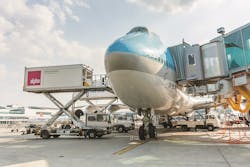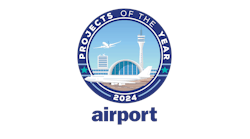The ‘Toyota production system’ (TPS) is perhaps the most successful managerial concept to have developed in the second half of the 20th century so much so that it has, to a large extent, set the base for international quality management system requirements epitomised in the ISO 9000 series of standards. TPS, whilst originating from the domain of manufacturing, applies equally well to the service industry where it can be applied to generate operational efficiencies to the benefit of the various stakeholders, be them external, e.g. the end user, or internal, e.g. other parties within a same company that depend on a particular service to be delivered to them.
‘Lean management’ is an alternative formulation of the ‘Toyota production system’ that is being more commonly used in current management thinking; the main concern of lean management is to consider a production – or service process – and try to ‘lean’ it, that is to say to streamline it; waste has to be eliminated, and only necessary tasks have to be performed to achieve the desired outcome - namely customer satisfaction. The aircraft ground handling process, knowingly or unknowingly, is already a very lean process in that significant efficiencies are present, such as the contemporary accomplishment of multiple aircraft servicing tasks at the same time. However, there is always room for improvement – indeed continuous improvement is part of lean management – and the aircraft ground handling industry per se in an adequate recipient of lean management strategies. In this column we shall identify some opportunities for additionally leaning up the aircraft ground handling process and offer some food for thought to aircraft ground handling managers to implement change management initiatives.
“What a customer does is to approach a supplier with a request for a product or service with certain specifications, and when an organisation applies lean management, what it does is to look at things backwards and come up with the most efficient way to achieve the desired outcome cutting off any type of waste,” says Christopher Laba, a lean management consultant with several years of experience in cargo operations. “The crucial word for lean is ‘waste,' everything that an organisation does not need. According to lean management thinking, there are three types of tasks and processes in an industrial or service setting with regard to waste: those which add value to the outcome, those that must be accomplished but do not add value ‘per se’ and those that are absolutely not necessary and must be eliminated.”
Passenger handling
The handling of passengers at the gate in the terminal area is a service which is normally delivered by aircraft ground handling companies. So far, the most common passenger boarding procedure is to board premium passengers, reduced mobility passengers and parents with infants first and then the rest of the passengers. According to Laba the passenger boarding process can be made a really ‘lean’ – or efficient – experience.
“To abide with the requirements for a quick turnaround process airlines and ground handling companies want to avoid the situation whereby cues increase the duration of boarding because of passengers with an allocated seat towards the front of the cabin blocking the way to passengers seating towards the rear of the cabin,” he says.
Especially applicable to low cost carriers, there are other models – which have not yet become mainstream – to make the boarding process more efficient, such as clustering and boarding passengers according to their seating area in the cabin, normally from the rear to the front.
“This need not require the physical clustering of passengers at the gate in different lines, automated solutions exist whereby when passengers scan their boarding pass are either allowed to board if their seating area’s time for boarding has arrived or denied boarding if their time has not arrived yet. Such a solution really speeds things up and contributes to make the whole process more efficient,” says Laba.
Baggage handling
A significant potential for inefficiency exists in the aircraft ground handling process concerning the need to offload bags in case of a passenger’s non-show at the gate.
“When a passenger’s bags are in the plane, the passenger must also be on board for security reasons. Only once passengers are accepted for boarding at the gate can then bags be loaded, because you are confident they are boarding, and you need not offload the bags from the plane,” points out Laba.
Whereas in the past it was more common to offload bags directly from the cargo compartment in case of non-shows, technology in baggage recollection areas is making it increasingly possible to load bags nearly at the same time as the passenger boards the plane.
“In the baggage recollection area you have bag containers or carts waiting and bags scanned, the scanner gives you a green or red colour code, depending on whether the passenger has been accepted for boarding or not. You need a certain time to prepare the bags for loading onto the plane; this can be shortened by using ULD containers for carrying cargo hold bags,” says Laba.
Cargo handling
A ‘lean’ solution for cargo operations concerns the positioning of containers in the cargo hold.
“Take, for example, a cargo flight from one point to another with an intermediate stop on the way. Containers destined to end destination need not be offloaded during the intermediate stop and should be arranged in the compartment so to allow the offload only of those destined to the intermediate stop,” Laba recommends.
“Low cost carriers tend to have a lot of spare cargo hold capacity because their passengers carry few hold bags, they would be happy to sell this as freight space provided that cargo containers are ready for loading upon the arrival of the aircraft without compromising with their ‘quick turnaround time’ requirement,” says Laba. Despite the additional revenue opportunities arising from selling cargo as a by-product, low cost carriers still have yet to fully exploit this benefit.
Cabin cleaning
In the case of short haul planes with no crew changes, a possible solution for the optimisation of resources is a practice most commonly adopted by low cost carriers whereby the cabin is cleaned by the cabin attendants during the stop.
“This solution only works, however, if the carrier has a simple catering concept (e.g. small snacks and drinks only) because there is not a significant cleaning effort required. Clearly this does not apply to larger aircraft deployed over long haul routes,” says Laba.
Sometimes aircraft are delayed on arrival, and in order not to cause an onward delay, the cabin cleaning service can be made shorter; this is another ‘lean’ management technique: the hovering of the cockpit and of the crew rest area, for example, can be skipped, without compromising the quality of service for the airfare paying passengers.
“Equally, for long haul services, the bedding of the crew rest area can be removed and fresh linen positioned for crews to install themselves at a later point in time during the flight. These solutions might save a few minutes to the cleaning crew and contribute to prevent, or at least contain, the delay,” says Laba.
Mapping and resource planning
One of the things a lean management professional does with processes is mapping them: whatever s/he observes is mapped, together with who goes where and for how long.
“The lean professional maps every single step, one by one, to see how they interact. The result of the mapping exercise serves also for resource planning purposes, in terms of both time, manpower and equipment,” says Laba. “A company adopting lean management must also have in place backup plans: what happens if the plane comes in late and still must leave on time? A lean organisation sets its backup plans to accomplish the tasks with a different trade-off between time and manpower, e.g. instead of five cleaners for 30 minutes it adapts its plans to 10 cleaners for 15 minutes.”
Safety and lean management
Safety is an important part of lean management, in that safety has to be part of management consideration when implementing lean management initiatives.
“Opportunities exist to make an operation quicker but not necessarily safe. A best safety practice, such as the positioning of stairs at an altitude that accounts for the adjustment of the aircraft’s altitude as it is offloaded and loaded, classifies as one of those processes that must implemented, a customer requirement to ensure passengers’ and crew members’ safety as well as the physical integrity of the aircraft, but that provides no direct value from a lean management perspective. Security is another function that provides no direct value, but that nevertheless must be accounted for in the process and its optimisation,” says Laba.
There is a concept in lean management that, according to Laba, also can be used for safety performance improvement; this is called ‘poka yoke,’ which in Japanese means ‘inadvertent error prevention.’ ‘Poka yoke’ are solutions that constrain operators’ behaviours and are designed into a process to prevent the incorrect operation of equipment by users. Whilst the concept originates from a need to prevent operators’ errors for efficiency purposes, it also can be used to frame safety behaviours by means of setting out only one way to perform a certain task. Laba highlights how already the fittings of an aircraft’s fuel tank panel, air conditioning panel, potable water service panel and waste water service panel are already very different to prevent the connection of the wrong piece of ground support equipment. More ‘poka yoke’ can be thought of with the support of human factors experts as the industry attempts to standardise its procedures to some common industry standards.
Harmonised effort
Leaning up the aircraft ground handling process requires a harmonised effort in the awareness that the ground time of an aircraft for servicing can be shortened only up to a certain point. The aircraft ground handling process is made of several tasks that may be performed simultaneously but each has a given duration.
“The shortest a turnaround can be reduced to is the duration of the longest individual servicing task, such as, for example, the loading of fuel. Provided the applicable safety precautions are taken, this can be accomplished with passengers on-board, there is no sense to speed up other parts if these longest parts cannot be additionally reduced,” concludes Laba.






